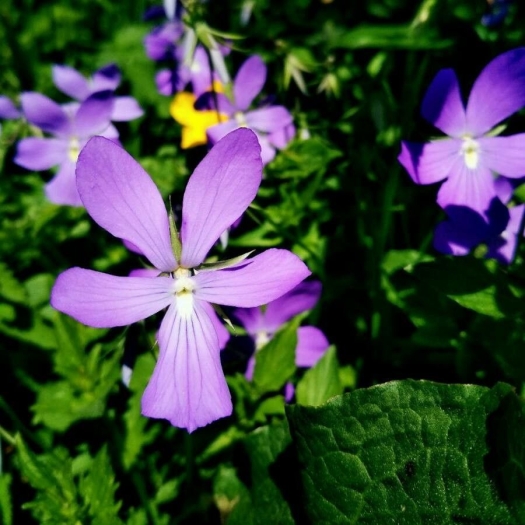Horned Violet
(Viola cornuta)
Horned Violet (Viola cornuta)
/
/

González Carolina
CC BY-SA 4.0












































Estimated Native Range
Summary
The Horned Violet is valued for its extended flowering period and low maintenance requirements. It is often used in border fronts, rock gardens, and as ground cover. This plant thrives in full sun to part shade and prefers consistently moist, well-drained soils. It is hardy to USDA zones 6–11 and can withstand temperatures down to −15 °C (5 °F). While it is generally disease-resistant, it can occasionally suffer from violet leaf spot and root rot if conditions are too wet. It is also important to note that Viola cornuta can self-seed prolifically under favorable conditions, which may be considered invasive in some areas.CC BY-SA 4.0
Plant Description
- Plant Type: Herb
- Height: 0.5-0.8 feet
- Width: 0.5-1 feet
- Growth Rate: Rapid
- Flower Color: Blue, Orange, Purple, White, Yellow
- Flowering Season: Spring, Summer, Fall
- Leaf Retention: Deciduous
Growth Requirements
- Sun: Full Sun, Part Shade
- Water: Medium
- Drainage: Slow, Medium, Fast
Common Uses
Bank Stabilization, Bee Garden, Border Plant, Butterfly Garden, Deer Resistant, Edible*Disclaimer: Easyscape's listed plant edibility is for informational use. Always verify the safety and proper identification of any plant before consumption., Fragrant, Groundcover, Low Maintenance, Potted Plant, Rock Garden, Showy Flowers, Street Planting
Natural Habitat
Cool mountain meadows and rocky areas of the Pyrenees in France and Spain
Other Names
Common Names: Horned Pansy, Bedding Pansy, Tufted Pansy, Viola, Horned Pansy, Pensamiento, Violette Cornue, Hornviol
Scientific Names: , Viola cornuta, Viola rolandii, Viola cornuta var. micrantha, Viola acaulis, Mnemion cornutum, Viola calcarata var. pyrenaica, Viola cornuta var. parvistipula,
GBIF Accepted Name: Viola cornuta L.